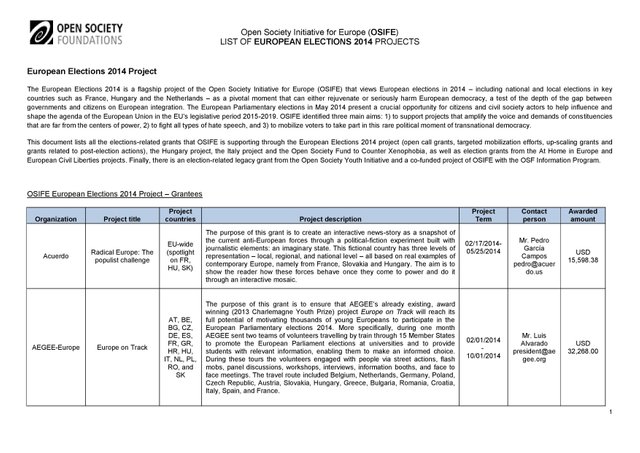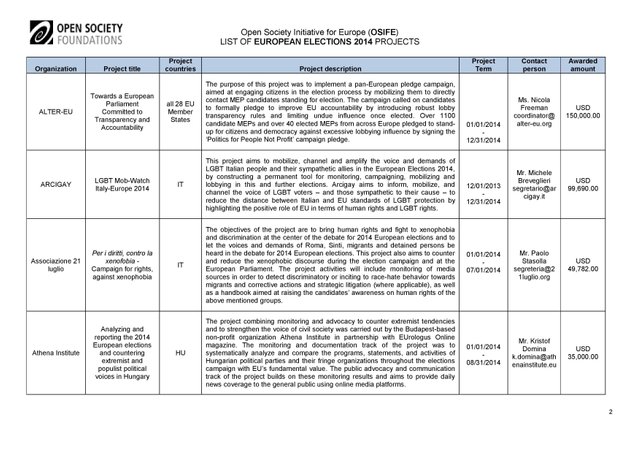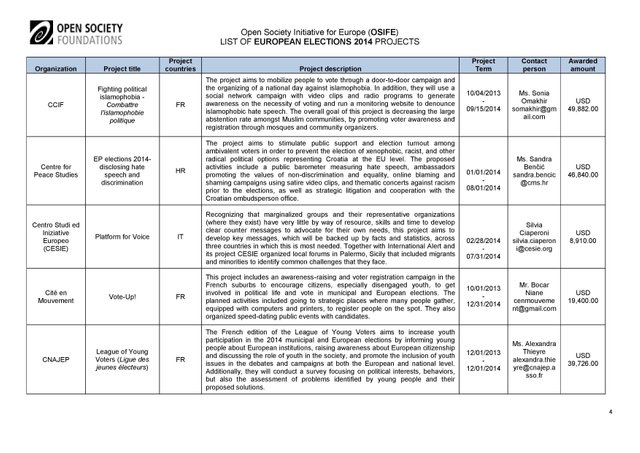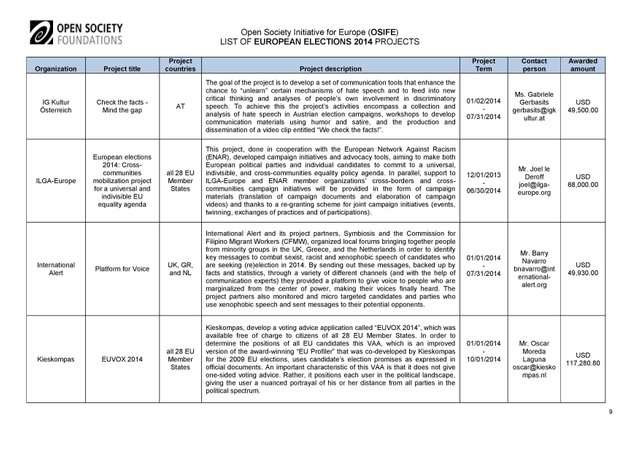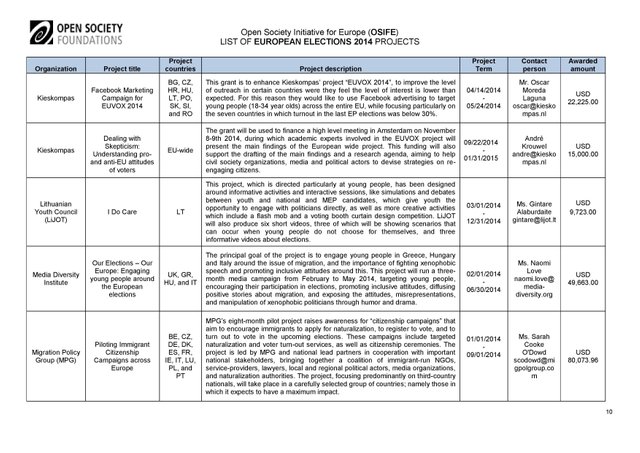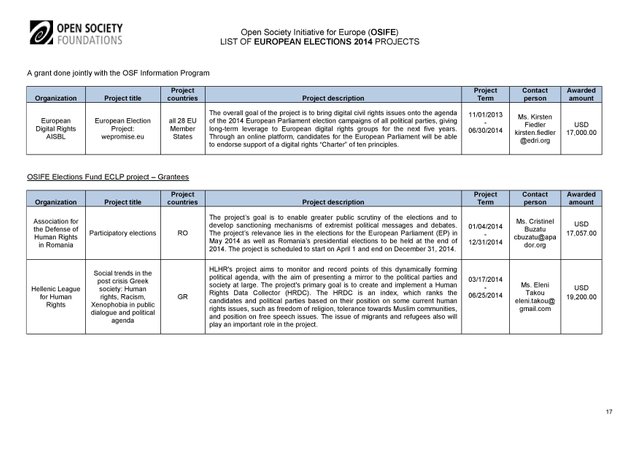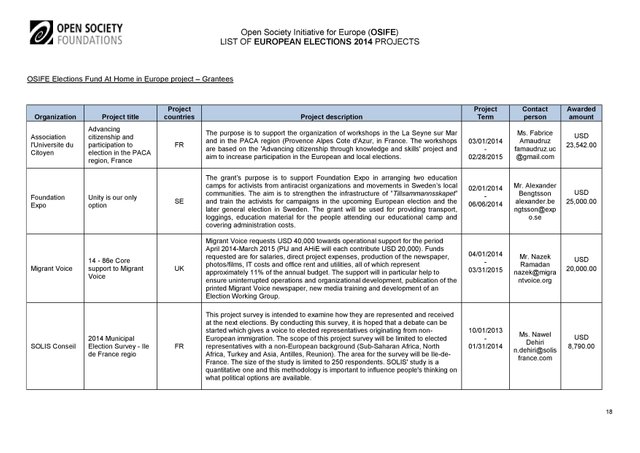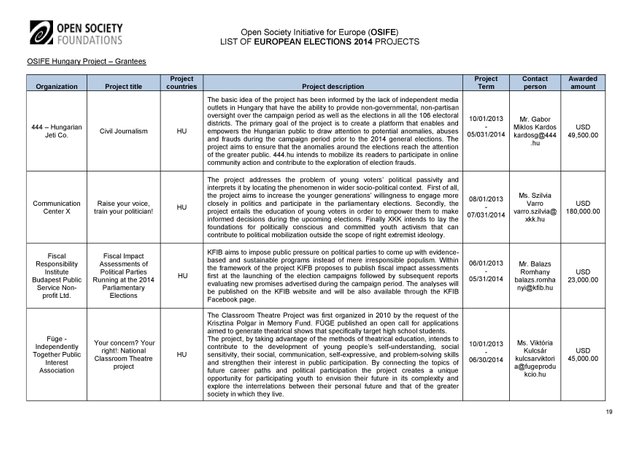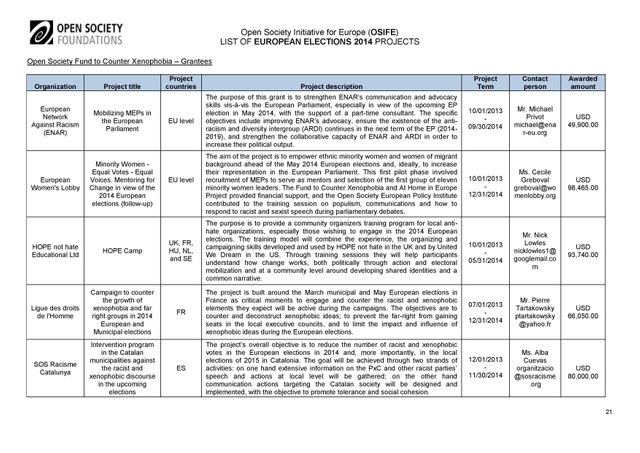https://www.healthspectra.com/graviola-for-cancer/
_
eof
AFSSA – Referral No. 2008-SA-0171
Maisons-Alfort,
April 28, 2010
from
the French Food Safety Agency regarding
the risks associated with the consumption of soursop and its
preparations
1.
REFERENCE REMINDER
On
June 2, 2008, the French Food Safety Agency (AFSSA) received a
request for scientific and technical support from the Directorate
General for Health regarding the risks associated with the
consumption of soursop (Annona muricata L.) and its preparations.
2.
EXPERTISE METHOD
The
collective expert assessment was carried out by the Specialized
Expert Committee (CES) "Human Nutrition" which met on April
23, 2009, May 28, 2009, June 25, 2009, and July 9, 2009. The
following insights can be identified. 3. RATIONALE
Afssa's
argument is based on the opinion of the Specialized Expert Committee
on Human Nutrition, the elements of which are presented below:
Context
Since
1999, based on observations conducted at the Pointe-à-Pitre
University Hospital, a link between the consumption of certain
tropical plants and the over-representation of atypical Parkinsonian
syndromes has been suggested. The Pointe-à-Pitre University Hospital
observed a frequency of around 70% of atypical Parkinsonian syndromes
in Guadeloupe compared to 30% for Parkinson's disease, while this
ratio is reversed in Europe.
The
Pointe-à-Pitre University Hospital specifically studied the
hypothesis of the involvement of Annonaceae consumption in this
pathology, particularly the consumption of soursop (Annona muricata
L.) nectar, juice, and infusions. The AFSSA, in the context of a
concerted approach with the AFSSAPS, then suggested conducting animal
studies using various traditional preparations of Annona muricata L.
This
request for scientific and technical support is based in particular
on the work and publications of the Pointe-à-Pitre University
Hospital team and on a pharmacy thesis (Champy, 2004b) studying the
neurotoxins of Annona muricata L. and their possible implications in
the occurrence of atypical Parkinsonian syndromes in Guadeloupe.
Three successive periods can be distinguished in the collection and
processing of information:
-
between 1995 and 2001: observations of clinical cases in Guadeloupe
and initial hypotheses proposed by the Pointe-à-Pitre University
Hospital team; - between 2001 and 2005: phytochemical and
toxicological study of Annona muricata and continuation of
epidemiological studies;
Between
2005 and 2009: Study of the mechanisms of action of annonacin and the
possible involvement of this compound in atypical Parkinsonian
syndromes.
Demonstration
of a potential link between atypical Parkinsonian syndromes and the
consumption of annonacin.
In
1999, a publication by Caparros-Lefebvre and colleagues highlighted
the association between the consumption of tropical plants in
Guadeloupe and an abnormally high frequency of atypical Parkinsonian
syndromes. Of the 87 cases observed in this publication, 65 patients
presented with this type of syndrome. Caparros-Lefebvre and his team
(1999) noted that the majority (94%) of patients suffering from PSP,
100% of those with other atypical Parkinsonian syndromes, 60% of
controls (people with mild symptoms without neurodegenerative
disorders), and those with Parkinson's disease were accustomed to
consuming Annonaceae fruits.
The
authors then suggested the possible role of Annonaceae in these
degenerative disorders.
Annonaceae
are plants containing isoquinoline alkaloids, used in the Caribbean
in food and traditional medicine, for example:
-
Asimina triloba (L.) Dunal (pawpaw);
-
Annona squamosa L. or custard apple: leaf infusions are consumed as a
purgative and reputed to be aphrodisiacs; - Annona muricata L.
(soursop): consumed as fruit and/or leaf teas, considered sedative,
sleep-inducing, and relaxing.
Supporting
this hypothesis, Lannuzel et al. (2001) showed that the isoquinoline
alkaloids of Annona muricata L. can passively diffuse into the
intracellular environment and are dopamine transporter inhibitors.
In
the absence of precise data on the consumption habits of patients
with Parkinson's syndromes, Afssa considers that the responsibility
of other causes, both environmental and genetic, cannot be excluded
(Angibaud et al. 2004, Caparros et al. 2006, Aubeneau et al. 2008).
Botanical information on Annona muricata L.
The
soursop, the fruit of the soursop tree Annona muricata, has a dark
green skin bristling with soft spines. The interior of the pericarp,
granular and creamy, separates into carpels (pseudosyncarpic fruit)
with a white flesh rich in juices. A fruit can contain up to 200
seeds (one seed per carpel). The slightly fibrous fruit pulp can be
eaten raw; it can be pressed to extract juice or incorporated into
sorbets. This pulp can also be fermented in the West Indies,
producing a cider-like drink.
While
several Annonaceae have uses in traditional medicine, others are
known to be toxic and are sometimes used as natural insecticides and
fish poisons. Traditional medicine reports the use of soursop leaf
teas for sedative and antidiarrheal purposes, and the use of the
seeds for pediculicidal and insecticidal purposes. As with most
Annonaceae, isoquinoline alkaloids are found in most organs of Annona
muricata (leaves, bark, roots, and to a lesser extent in the fruit
and seeds).
Chemical
characteristics and biological effects of various substances present
in Annona muricata L.
Phytochemical
and toxicological studies (Champy et al. 2004a, Cha/ 7
DERNS/Enr.22
1-
Isoquinoline alkaloids
Quantitative
and qualitative estimates have shown that: (i) the alkaloid content
of the fruit pulp can reach 0.1%; (ii) that of the nectar is minimal
(15 ppm); (iii) the alkaloids present in the leaves increase to 90%
in traditional preparations; (iiii) reticuline is the most abundant.
Given
that some isoquinolines are inhibitors of complex I of the
mitochondrial respiratory chain and of β-ketoglutarate
dehydrogenase, as well as disruptors of metabolism and the dopamine
transporter. In vitro studies have supported this hypothesis, notably
by showing that the isoquinoline alkaloids of Annona muricata L. can
passively diffuse into the intracellular environment and are
inhibitors of the dopamine transporter (Lannuzel et al., 2001).
Isoquinoline alkaloids extracted from the leaves are toxic
(apoptotic) to PC12 cells, models of catecholaminergic neurons, and
inhibit mitochondrial respiration (Champy, 2004b). While the
cytotoxicity of isoquinoline alkaloids has been demonstrated in
vitro, in vivo toxicity studies of isoquinoline alkaloids provide
conflicting results. The most commonly used method of administration,
namely subcutaneous or intraperitoneal injections, is not the most
appropriate for testing the hypothesis of toxicity of Annonaceae
alkaloids in their traditional and dietary uses (Champy, 2004b).
AFSSA
believes that these highly targeted models cannot reflect the
conditions of oral exposure of the population.
2-
Acetogenins
These
are long-chain lipophilic compounds derived from fatty acids
(polyacetates derived from the acetate pathway, hence the name
"acetogenins"). They are secondary metabolites
characteristic of Annonaceae, initially discovered in the seeds, some
of which have long been known as insecticides or pesticide. These
compounds have the property of inhibiting complex I of the
mitochondrial respiratory chain (NADH-ubiquinone oxidoreductase). To
date, 400 acetogenins have been identified, and more than 100 A.
muricata acetogenins are known (57 in seeds, 34 in leaves, and 28 in
roots). Annonacin is relatively abundant in seeds and roots,
accounting for 72% of the total acetogenins. An initial study
(Lannuzel et al. 2003) was conducted on Wistar rat embryos from which
mesencephalic neurons were isolated and cultured. Specific inhibition
of mitochondrial complex I activity was demonstrated at a
concentration of 100 nM annonacin.
The IC50 is estimated at
approximately 30 nM. Damage to dopaminergic neurons is visible at
concentrations above 20 nM. A comparison of neuronal toxicity was
made with two positive controls: rotenone1 and MPTP2. This 24-hour
cytotoxic activity measurement revealed that annonacin is twice as
toxic as rotenone (IC50 of 18 nM versus 34 nM) and 100 times more
toxic than MPP+, a metabolite of MPTP. In 2007, more specific in
vitro/vivo studies were conducted (Escobar-Khondiker, 2007).
It was
shown that annonacin induces cell death in striatal neurons as well
as an increase and redistribution of tau protein at concentrations
between 25 and 100 nM. This redistribution of tau protein results
from the inhibition of mitochondrial complex I.
Similar effects on
tau protein can be compared to observations of conducted after
anatomopathological examinations of Guadeloupean subjects who died
from atypical Parkinsonian syndromes (Caparros-Lefebvre et al. 2002).
Fragmentation of microtubules, which play a role in the intracellular
transport of dopamine vesicles, was also observed.
AFSSA
believes that these in vitro data confirm the mechanism of action of
annonacin but believes that these highly targeted models cannot be
extrapolated to the conditions of exposure in the general
population.
__
1
plant-derived insecticide
2
1-Methyl-4-phenylpyridinium is used as a reference substance to
pharmacologically induce
Parkinson's
disease-like pathology in animals.
Various
in vivo animal studies have considered the neurological toxicity of
annonacin.
The
passage of the intestinal barrier by acetogenins (lipophilic) had
already been demonstrated (Duret, 1997). Subchronic intoxication
tests over 28 days (injections of annonacin into the femoral vein in
rats at doses of 1.26 and 7.6 mg/kg/day) were conducted to verify
both brain barrier passage and its effects (Champy et al. 2004;
Champy, 2004b). Behavior, body mass, spontaneous locomotion, postural
instability, adaptation of the forelimbs to forced translation, and
the appearance of various organs (heart, lungs, spleen, kidneys,
etc.) were not altered.
The main observations included penetration
and accumulation of annonacin in the parenchyma, a very significant
decrease in ATP in the cerebral cortex, and inhibition of complex I
activity of the same intensity (50%) as that exerted by rotenone,
with a decrease in oxidative phosphorylation.
Neuronal degeneration
of the midbrain dopaminergic areas is also observed. Other brain
regions are moderately affected: loss of neurons in the striatal and
nigral zones, cytoplasmic and neuronal vacuolation, loss of
dopaminergic neurons, a reduction in the number of striatal
dopaminergic neurons, and cytoplasmic vacuolation of cholinergic
interneurons have been observed (Champy, 2004b).
AFSSA
considers that these experimental results demonstrate neurotoxicity
of annonacin in vivo. However, the results of the subchronic
annonacin poisoning study in an animal model are difficult to
extrapolate to humans: the chosen route of administration
(intravenous) differs from the human route of exposure, and kinetic
data (bioavailability, molecule metabolism) are lacking.
Furthermore,
AFSSA considers that the lack of evidence in animals of a
dose-response effect and the definition of a no-effect dose makes it
very difficult to interpret this neurotoxicity.
Consumption
Data
According
to quantitative estimates, a consumer of herbal teas, at a rate of
one cup per day (2 mg/cup), can ingest 700 mg of total alkaloids in
one year, which represents an intake of 10 mg/kg/year. This
cumulative intake of total alkaloids (10 mg/kg/year) can also be
achieved by a nectar consumer, at a rate of 1 liter per week (Champy,
2004b).
As
for annonacin, its concentration in commercial nectar is around 100
mg/liter. It has been shown that acetogenins from the leaves pass
into an infusion, without alteration, at a rate of 0.14 mg per cup
for crushed leaves (extraction yield of approximately 15%) and 0.4
mg/cup for crushed leaves (extraction yield of approximately 50%). In
2007, a post-hoc dietary survey questionnaire concerning the
cumulative consumption of Annona muricata L. (fruits and leaf
infusions) over the previous 10 years was administered to 69 sick
subjects as well as to 88 non-sick subjects (Lannuzel and al. 2007).
Consumers were classified into two groups: occasional consumers
(annual consumption of less than 10 fruits) and heavy consumers
(annual consumption of 10 fruits or more). In this publication, the
authors estimated that a medium-sized fruit or a glass of fruit juice
provides 15 mg of annonacin and a cup of herbal tea 0.14 mg.
Reported
consumption was translated into annonacin intake for a body mass of
70 kg and extrapolated based on the duration of the consumption
habit. 3 Cumulative lifetime intake was estimated by the authors at
150 g of annonacin in subjects with atypical Parkinsonian syndromes
compared to 20-30 g in subjects with Parkinson's disease or healthy
controls. Regarding the dietary intake of annonacin presented here,
Afssa considers that their estimate, in order to deduce the effects
in humans, would merit further refinement through rigorous
consumption surveys, taking into account the levels present in the
different parts of the plant and in the preparations consumed.
Necessary
elements to consider when considering nutritional recommendations
In
order to conduct a more precise assessment of the risks associated
with the consumption of this type of plant to the population, the
following information would be necessary:
-
a precise assessment of the levels of annonacin and derivatives
present in the plants concerned, as well as relevant data on their
level of consumption by the population;
-
additional toxicity data on annonacin, including a long-term study
(13 weeks by oral administration).
4. CONCLUSION
A
link between the consumption of Annonaceae and the overrepresentation
of atypical Parkinsonian syndromes in Guadeloupe has been suggested
by the Pointe-à-Pitre University Hospital team.
Studies
on animal and cellular models have demonstrated proven neurotoxicity of
annonacin (acetogenin) and cytotoxicity of the isoquinoline alkaloids
present in
soursop (Annona muricata L.). However, to date, based on the
available experimental data, it is not possible to confirm that the
cases of atypical Parkinsonian syndromes observed in Guadeloupe are
linked to the consumption of Annonaceae such as Annona muricata L.
Given
the current state of knowledge, it is therefore not possible to
propose precise quantitative recommendations for soursop consumption
in the general population, but soursop-based preparations should be
given particular attention due to the risk of extracting toxic
compounds.
Given
the potential neurological risk of these plant compounds in humans,
Afssa believes that research on annonacin is necessary to better
characterize the risk associated with soursop consumption, focusing
in particular on:
__
3
Data
collection was carried out over successive 10-year periods. It should
be noted that the authors considered that the consumption of 2
fruits/year for 10 years, the consumption of 1 fruit/year for 20
years,
-
the kinetic properties of the molecule (oral bioavailability,
metabolism, etc.);
-
its long-term toxicity in order to assess the risk of consumer
exposure to these plant compounds;
-
a precise quantification of daily annonacin intake.
AFSSA
recommends continuing the epidemiological surveillance of atypical
Parkinsonian syndromes in Guadeloupe, which has already been
initiated, and implementing, immediately, toxicovigilance monitoring
regarding the consumption of soursop and soursop extracts. Executive
Director Marc MORTUREUX
KEYWORDS
PARKINSON'S
DISEASE, ANNONA MURICATA L., SOURSOP, ANNONACIN, PLANTS
BIBLIOGRAPHICAL
REFERENCES:
Angibaud
G, Gaultier C, Rascol O (2004) Atypical Parkinsonism and Annonaceae
consumption in New Caledonia, Mov Disord 19, 603-4.
Aubeneau
L, Bohu PA, Hannequin D, Maltête D (2008) Chronic Parkinsonian
Syndrome in a Man Exposed for 10 Years to Insecticide Spraying, Rev
Neurol, 164, 374-6.
Caparros-Lefebvre
D, Elbaz A (1999) Possible Relationship of Atypical Parkinsonism in
the French West Indies with Consumption of Tropical Plants: A
Case-Control Study. Caribbean Parkinsonism
Study Group, Lancet, 354, 281-6.
Caparros-Lefebvre
D, Sergeant N, Lees A, Camuzat A, Daniel S, Lannuzel A, Brice A,
Tolosa E,
Delacourte A, Duyckaerts C (2002) Guadeloupean parkinsonism: a
cluster of progressive
supranuclear palsy-like tauopathy, Brain, 1215, 801-11.
Caparros-Lefebvre
D, Steele J, Kotake Y, Ohta S (2006) Geographic isolates of atypical Parkinsonism
and tauopathy in the tropics: possible synergy of neurotoxins, Mov Disord.,
21, 1769-71.
Champy
P, Höglinger G U, Féger J, Gleye C, Hocquemiler R, Laurens A,
Guérineau V, Laprévote
O, Medja F, Lombès A, Michel P, Lannuzel A, Hirsch E C, Ruberg M
(2004a) Annonacin,
a lipophilic inhibitor of mitochondrial complex I, induces nigral and
striatal neurodegeneration
in rats: possible relevance for atypical pkinsonism in Guadeloupe, J
Neurochem, 88, 63-9.
Champy
P (2004b) "Chemical and biological study of neurotoxins from
Annona muricata L. (Annonaceae) that may be involved in the
occurrence of atypical Parkinsonism in Guadeloupe", Doctoral
thesis, University of Paris XI, November 30, 2004.
Duret
P (1997) Chemical and biological study of acetogenins from the roots
of Annona cherimolla and the seeds of Annona Atemoya (Annonaceae),
Doctoral thesis, University of Paris XI, Chatenay Malabry, 1997.
Escobar-Khondiker
M, Höllerhage M, Muriel M P, Champy P, Bach A, Depienne C, Respondek
G, Yamada E S, Lannuzel A, Yagi A, Yagi T, Hirsch E C, Oertel W,
Jacob R, Michel P P, Ruberg M, Höglinger G U (2007) Annonacin, a
Natural Mitochondrial complex I Inhibitor,
Causes Tau Pathology in cultured Neurons, The J Neurosci, 27,
7827-37.
Hirano
A, Malamud N, Kurland LT (1961) Parkinsonism-dementia complex, an
endemic disease on
the island of Guam. II: pathological characteristics, Brain, 84,
662-79.
Lannuzel
A, Michel PP, Caparros-Lefebvre D, Abaul J, Hocquemiller R, Ruberg M
(2001) Toxicity
of Annonaceae for dopaminergic neurons: potential role in atypical parkinsonism
in Guadeloupe, Mov Disord, 15 (Suppl.3), 28-35.
Lannuzel
A, Michel PP, Höglinger G U, Champy P, Jousset A, Medja F, Lombès
A, Darios F, Gleye
C, Laurens A, Hocquemiler R, Hirsch E C, Ruberg M (2003) The
mitochondrial complex
I inhibitor annonacin is toxic to mesencephalic dopaminergic neurons
by impairment
of energy metabolism, Neurosciences, 121, 287-96.
Lannuzel
A, Höglinger G U, Verhaeghe S, Gire L, Belson S, Escobar-Khondiker
M, Poullain P, Oertel
W H, Hirsch E C, Dubois B, Ruberg M (2007) Atypical parkinsonism in Guadeloupe:
a common risk factor for two closely related phenotypes? Brain, 130,
816-27.
https://www.anses.fr/en/system/files/NUT2008sa0171.pdf
___
Annonaceae acetogenins and atypical Parkinsonism: From annonacin bioavailability to dietary exposure.
Natacha Bonneau















